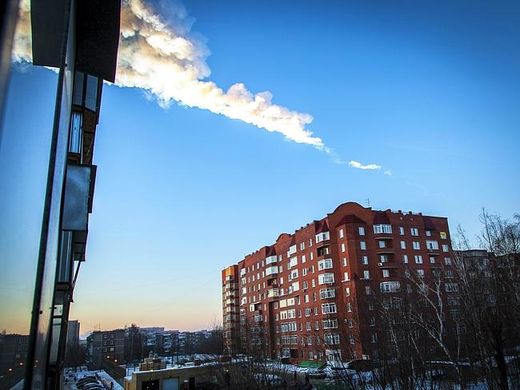
The trajectory of the 270m diameter near-Earth asteroid, named 2000 EM26, posed no threat to our planet as it whizzed past at 12.37km per second earlier today.
At its closest point, it was about 8.8 times further from Earth than the Moon.
Unfortunately the Slooh Observatory on the Canary Islands was 'iced up' so it wasn't possible to record any live images of the asteroid.
"We continue to discover these potentially hazardous asteroids - sometimes only days before they make their close approaches to Earth," a spokesman for astronomical survey organisation Slooh said in a statement.
"We need to find them before they find us," research director Paul Cos said.
A little more than a year ago scientists were watching a similar 30m asteroid skim close to the Earth's atmosphere when they were "blindsided" by a meteor which came out of nowhere.
The unrelated rock exploded above the Russian region of Chelyabinsk, smashing windows and shaking buildings.
More than 1,000 people were injured by the debris.
"On a practical level, a previously-unknown, undiscovered asteroid seems to hit our planet and cause damage or injury once a century or so, as we witnessed on June 20, 1908 and February 15, 2013," Slooh astronomer Bob Berman said.
"Every few centuries, an even more massive asteroid strikes us - fortunately usually impacting in an ocean or wasteland such an Antarctica."
The Chelyabinsk meteor, later estimated to be about 20m wide, exploded about 29km above the ground with the force of 20 atomic bombs.



Reader Comments
to our Newsletter